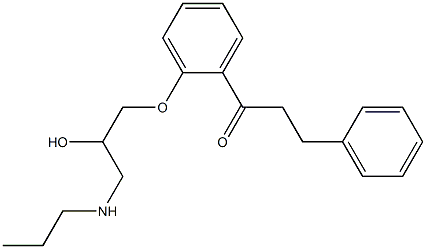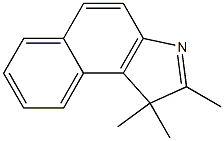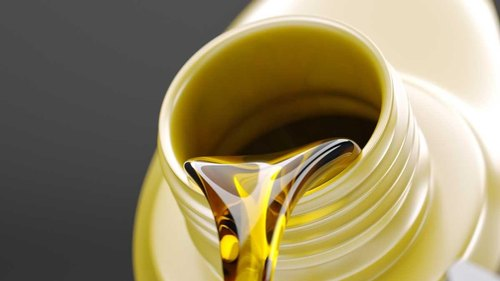Mineral oil
Synonym(s):light mineral oil;Mineral oil;Mineral oil for PCR;Nujol;Paraffin oil
- CAS NO.:8042-47-5
- Empirical Formula: N/A
- Molecular Weight: 23.9979
- MDL number: MFCD01779781
- EINECS: 232-455-8
- SAFETY DATA SHEET (SDS)
- Update Date: 2025-01-27 09:38:02
What is Mineral oil?
Chemical properties
Mineral oil mist is a colorless, oily liquid aerosol dispersed in air with an odor like burned lubricating oil. The odor threshold is 1.0 ppm.
The Uses of Mineral oil
mineral oil is an emollient cleanser and demulsifier of dirt trapped in pores. Mineral oil is excellent for use in cleansers. In leave-on cosmetics, its comedogenicity or lack thereof appears related to the level of raw material refinement; therefore, some suppliers state that their product is non-comedogenic. When used in leave-on preparations, mineral oil’s occlusive capability is considered to help improve the epidermal barrier function. This is a clear, odorless oil derived from petroleum and is not known to cause allergic reactions.
The Uses of Mineral oil
For routine PCR amplifications. Minimizes evaporation of reactions run in PCR instruments without heated lids.
The Uses of Mineral oil
Mineral oil is used as an overlay covering microdrops of culture medium in petri dishes. It is an active ingredient in baby lotions, cold creams, ointments and cosmetics. It is also used in electrical and mechanical industries as thermal fluid in electrical components and non -conductive coolant. It finds application as a transformer oil, as an anti rust agent for blades and as an insulator in high voltage switchgear. Further, it is used to store reactive metals like lithium, sodium, etc and in X-ray crystallography to suspend crystals.
Background
Mineral oil, or paraffin oil, is a mixture of higher alkanes from a mineral source, such as petroleum. Petroleum mineral oil is manufactured from crude oils by vacuum distillation to produce several distillates and a residual oil that are then further refined. During the modern refining process, aromatics are reduced by solvent extraction, catalytic hydrotreating, or hydrocracking. Unrefined or mildly treated mineral oils are classified as Group 3 carcinogens by the World Health Organizations, as chronic exposure to these aromatics including alkylated polycyclic aromatic compounds (PAC) can lead to skin cancer.
Mineral oil is a common ingredient in baby lotions, cold creams, ointments and cosmetics to treat and prevent dry, rough, scaly, itchy skin and minor skin irritations. It is also used as a mild laxative for human or veterinary uses.
Indications
Mineral oil is not considered an active pharmacological ingredient in pharmaceutical preparations and so has no official indication. It is typically present in topical formulations as an emollient and occlusive agent .
Definition
Mineral oil is a highly refined petroleum mineral oil consisting of a complex combination of hydrocarbons obtained from the intensive treatment of a petroleum fraction with sulfuric acid and oleum, or by hydrogenation, or by a combination of hydrogenation and acid treatment. Additional washing and treating steps may be included in the processing operation. It consists of saturated hydrocarbons having carbon numbers predominantly in the range of C15 through C50.
brand name
Balneol (Solvay Pharmaceuticals); Neo-Cultol (Fisons); Nujol (Schering-Plough HealthCare).
General Description
Sigma′s Blue-White Select? Screening Reagent is a chromogenic substrate for β-galactosidase, used to determine the presence or absence of a cloned DNA insert in bacteria growing on agar plates. Blue-White Select? Screening Reagent is designed for blue-white selection of recombinant bacterial colonies with the lac+ phenotype.
Health Hazard
Recommended Personal Protective Equipment: Goggles or face shield; Symptoms Following Exposure: Ingestion of liquid can cause very loose bowel movements; General Treatment for Exposure: EYES: wash with water; Toxicity by Inhalation (Threshold Limit Value): Not pertinent; Short-Term Inhalation Limits: Not pertinent; Toxicity by Ingestion: Grade 1, LD50 = 5 to 15 g/kg; Late Toxicity: None; Vapor (Gas) Irritant Characteristics: None; Liquid or Solid Irritant Characteristics: None; Odor Threshold: Not pertinent.
Flammability and Explosibility
Non flammable
Chemical Reactivity
Reactivity with Water No reaction; Reactivity with Common Materials: No reaction; Stability During Transport: Stable; Neutralizing Agents for Acids and Caustics: Not pertinent; Polymerization: Not pertinent; Inhibitor of Polymerization: Not pertinent.
Biochem/physiol Actions
Mineral oil functions by forming a depot at the injection site slowly releasing antigen.
Pharmacokinetics
Mineral oil blocks the loss of water from the skin allowing greater hydration of the epidermis .
Side Effects
It is itself absorbed slightly and appears in the mesenteric lymph nodes, and if it is inhaled into the lungs (which it may be in elderly or debilitated patients), it may produce inflammatory responses such as lipoid pneumonia. Its continual use, therefore, is contraindicated, although its occasional administration in otherwise well patients is not harmful. It is employed primarily in patients who must avoid straining at stool, including persons with hemorrhoids and other painful anal lesions. Leakage of mineral oil past the anal sphincter may lead to soiling of clothing. Docusate dioctyl sodium sulfosuccinate (Colace),
Safety Profile
Highly purified food grades are of low toxicity. Questionable carcinogen. When heated to decomposition it emits acrid smoke and irritating fumes.
Potential Exposure
Mineral oil is used in cosmetics, pharmaceutical bases; food, and fiber production; as carriers and bases; as a lubricating oil and as a solvent for inks in the printing industry. Oil mist would be encountered in quenching of hot metal parts and in metal machining operations.
Veterinary Drugs and Treatments
Mineral oil is commonly used in horses to treat constipation and
fecal impactions.
It is also employed as a laxative in other species
as well, but used less frequently. Mineral oil has been administered
after ingesting lipid-soluble toxins (e.g., kerosene, metaldehyde) to
retard the absorption of these toxins through its laxative and solubility
properties.
Petrolatum containing products (e.g., Felaxin?, Laxatone?, Kat-
A-Lax?, etc.) may be used in dogs and cats as a laxative or to prevent/
reduce “hair-balls” in cats.
Metabolism
Not Available
Incompatibilities
Incompatible with oxidizers (chlorates, nitrates, peroxides, permanganates, perchlorates, chlorine, bromine, fluorine, etc.); contact may cause fires or explosions. Keep away from alkaline materials, strong acids (especially nitric acid), strong bases.
Waste Disposal
Dissolve or mix the material with a combustible solvent and burn in a chemical incinerator equipped with an afterburner and scrubber. All federal, state, and local environmental regulations must be observed.
Properties of Mineral oil
| Density | 0.85 g/mL at 20 °C |
| vapor pressure | 0.0001 hPa (20 °C) |
| refractive index | n |
| Flash point: | 185 °C |
| storage temp. | room temp |
| solubility | soluble in Chloroform |
| form | light oil |
| color | white |
| Odor | Very faint. |
| Water Solubility | insoluble |
| λmax | λ: 260 nm Amax: 0.7 λ: 280 nm Amax: 1.0 |
| Dielectric constant | 2.1(27℃) |
| EPA Substance Registry System | White mineral oil (petroleum) (8042-47-5) |
Safety information for Mineral oil
| Signal word | Danger |
| Pictogram(s) |
 Health Hazard GHS08 |
| GHS Hazard Statements |
H304:Aspiration hazard |
| Precautionary Statement Codes |
P331:Do NOT induce vomiting. P301+P310:IF SWALLOWED: Immediately call a POISON CENTER or doctor/physician. P405:Store locked up. P501:Dispose of contents/container to..… |
Computed Descriptors for Mineral oil
Mineral oil manufacturer
New Products
1-Boc-4-cyanopiperidine tert-Butyl carbazate 1-(TERT-BUTOXYCARBONYL)-2-PYRROLIDINONE TETRABUTYLAMMONIUM CYANIDE TETRAHYDRO-2H-PYRAN-3-OL 3-Pyridineacrylic acid Nickel(II) perchlorate hexahydrate, 98% 4-Bromophenylacetonitrile, 95% 3-Bromo-4-fluoroaniline, 97% Sodium tetraborate decahydrate, 98% Palladium(II) acetate, trimer, Pd 99% 4-Bromo-2-chlorotoluene, 97% Tadalafil Clopidogrel bisulfate Sitagliptin Phosphate Monohydrate Cabergoline Fexofinadine HCl Etoricoxib 4-Amino Acetophenone 2-Chloro Acetophenone Amlodipine Base 2,3,5-Triiodobenzoic Acid Pyrrolidine Diiodo PentoxideRelated products of tetrahydrofuran








You may like
-
 Mineral oil coating agentView Details
Mineral oil coating agentView Details
8042-47-5 -
 8012-95-1 / 102819-98-7 Mineral oil 99%View Details
8012-95-1 / 102819-98-7 Mineral oil 99%View Details
8012-95-1 / 102819-98-7 -
 Viscosity standard, Nominally 30cSt at 40°C and 5.3cSt at 100°C CAS 8042-47-5View Details
Viscosity standard, Nominally 30cSt at 40°C and 5.3cSt at 100°C CAS 8042-47-5View Details
8042-47-5 -
 Mineral oil, light CAS 8042-47-5View Details
Mineral oil, light CAS 8042-47-5View Details
8042-47-5 -
 Mineral oil (Russian) CAS 8042-47-5View Details
Mineral oil (Russian) CAS 8042-47-5View Details
8042-47-5 -
 Waste mineral oil (PCB) CASView Details
Waste mineral oil (PCB) CASView Details -
 Mineral oil CAS 8042-47-5View Details
Mineral oil CAS 8042-47-5View Details
8042-47-5 -
 Blue-White Select™ Screening Reagent CASView Details
Blue-White Select™ Screening Reagent CASView Details
